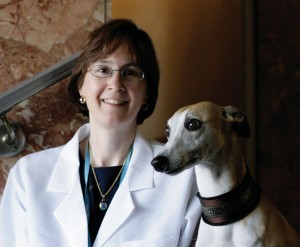-
Adopt
-
Veterinary Care
Services
Client Information
- What to Expect – Angell Boston
- Client Rights and Responsibilities
- Payments / Financial Assistance
- Pharmacy
- Client Policies
- Our Doctors
- Grief Support / Counseling
- Directions and Parking
- Helpful “How-to” Pet Care
Online Payments
Referrals
- Referral Forms/Contact
- Direct Connect
- Referring Veterinarian Portal
- Clinical Articles
- Partners in Care Newsletter
CE, Internships & Alumni Info
CE Seminar Schedule
Emergency: Boston
Emergency: Waltham
Poison Control Hotline
-
Programs & Resources
- Careers
-
Donate Now

Angell Pathology Service
617-541-5014
What is the difference between HCT (hematocrit) and PCV (packed cell volume) and which is best for clinical use?
If you are assessing HCT/PCV over time in a hospitalized patient, the best option is consistency…..use the same method. I would select spun HCT/PCV (centrifugation method) because it is directly measured rather than calculated. I would be sure that the conditions which can artifactually decrease or increase spun HCT/PCV (excess EDTA, premature termination of centrifugation, clots in the sample, in vitro hemolysis, and inadequate mixing of blood) are avoided.
DETAILED EXPLANATION:
HCT/PCV is the percent of blood volume filled by erythrocytes and, thus, a measure of oxygen carrying capacity of the blood. If there are 100 ml of blood with a HCT of 45%, the erythrocytes occupy 45 ml. You have to carefully consider terminology and methods to answer the question above. Spun HCT and Spun PCV are different names for the same thing (both are derived by the same method—determined by centrifugation of anticoagulated whole blood). Calculated HCT is determined by automated hematology instruments (impedance cell counters). It calculates HCT using the following formula: MCV x RBC count/10. Because it is a calculated value, HCT depends on MCV (mean corpuscular volume) and the RBC count being measured accurately by the instrument with no complicating factors.
For example, agglutination can falsely decrease calculated HCT, but will have no effect on spun PCV/HCT. Excess EDTA (too little blood volume for the size of EDTA tube used) shrinks RBCs and can result in a falsely decreased spun PCV/HCT. Inadequate centrifugation of blood (such as occurs when someone gets in a hurry and stops the centrifuge prematurely) can result in a falsely increased spun PCV/HCT, but it will not be an issue for calculated HCT because the blood is not centrifuged prior to analysis. And, to complicate matters further, our NOVA instrument is also capable of generating a HCT and it does so using an entirely different method (electrical conductivity; frequently referred to as conductivity HCT). It is the least accurate of the methods and for this reason, I don’t recommend utilizing the NOVA HCT for clinical use.
To contact Dr. Ewing or Angell’s in-house laboratory, please call 617-541-5014 or email pathology@angell.org.